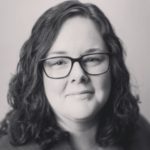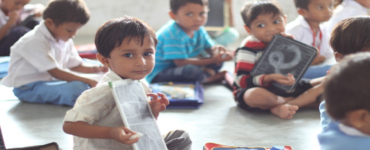Reflection plays an important role in teachers’ professional development. In this paper, Dr. Henderson Lee and four of her former graduate TESOL advisees share their critical friendship, highlighting the connection between reflective language teaching and the development of L2 literacy teacher-scholars.
Key words: reflective language teaching, L2 literacy, critical friendship, teacher-scholars, global contexts
This short paper highlights the voices of four recent MA graduates as emerging second language (L2) literacy teacher-scholars. In my Fall 2015 graduate seminar, Second Language Literacy, the teacher-scholars, who are co-authors here (Ryosuke, Charlotte, Alejandro, and Shyam), developed as language teachers who understand literacy as situated social practice, which is informed by users’ socially and historically constructed identities (Gee, 2015), and who consciously and systematically reflected on their L2 literacy teaching for positive change (Farrell, 2007). In this graduate classroom context, they explored critical readings, interactive discussions, content applications, and individual reflections. Now, as doctoral students and full-time teachers, they continue to engage in L2 literacy reflection with each other and their former adviser (Sarah) through a critical friendship, or teacher collaboration “which encourages talking with, questioning, and even confronting, the trusted other, in order to examine planning for teaching, implementation, and its evaluation” (Hatton & Smith, 1995, p. 41). The reflective snapshots shared in this paper stem from the teacher-scholars’ collaborative exploration of L2 literacy as social practice across four unique teaching contexts.
Reflective Language Teaching
To better understand the role of reflection in language teacher education, areas of teacher reflection and tools for teachers to reflect, as well as the construct of reflexivity, have been emphasized in the literature (De Costa, 2015; Edge, 2011; Farrell, 2007, 2012; Kumaravadivelu, 2001; Mann & Walsh, 2017). Farrell (2007), for example, defines reflective language teaching as “a bottom-up approach to teacher professional development that is based on the belief that experienced and novice language teachers can improve their understanding of their own teaching by consciously and systematically reflecting on their teaching experiences” (p. 9). To achieve such reflection, Farrell (2007) outlines several areas of reflection, including self-reflection, teachers’ beliefs and practices, teachers’ language proficiency, and classroom communication, and details a number of tools through which teachers and teacher educators can reflect, such as action research, teacher journals, classroom observations, and critical friendships. Building on this foundation of reflective language teaching, Edge (2011) presents reflexivity, or the interdependent interaction between practitioner and context, as both located in and distinguished from reflective practice. The discursive construction of reflexivity, moreover, “advocates social justice and examines the power imbalances that occur in language teaching as well as the ethical concerns surrounding it” (De Costa, 2015, p. 136).
In teaching a graduate seminar on L2 literacy and advising L2 literacy-related MA theses and capstone projects, I (Sarah) turn to the above reflective language teaching framework to further develop my students and advisees as L2 literacy teacher-scholars. By focusing their reflection on the intersection of sociocultural perspectives of L2 literacy and their own practice, graduate TESOL students begin to see themselves as both consumers and producers of theory (Kumaravadivelu, 2001), and, in turn, feel empowered to make meaningful positive change in their unique L2 literacy teaching contexts.
Our Reflective Process
In addition to being students in my L2 literacy seminar, Ryosuke, Charlotte, Alejandro, and Shyam were also my advisees. This allowed us to extend conversations we started in the graduate classroom about socially situated literacy in regard to the students’ unique teaching contexts, leading to the development of thesis and capstone project ideas and a collaborative presentation at MIDTESOL 2016 from which this paper stems. To prepare for that presentation, I asked the four graduate students to return to the context-focused research question they proposed for a literature review assignment in the L2 literacy seminar and reflect on how that work impacted their current practice and what new related questions or challenges had surfaced. Aligned with Farrell’s (2007) bottom-up approach to reflective language teaching, this request positioned students within their own context-specific experiences and emphasized the cyclical power of reflection. A shared online writing space was used to read and respond to each other’s reflections, which prompted further reflection and revision. Additionally, the group met twice in Fall 2016 for face-to-face dialogue, deepening our co-construction of L2 literacy knowledge and allowing new and more localized understandings to emerge.
Two years later, with group members in Minnesota, Indiana, and Japan, I asked Ryosuke, Charlotte, Alejandro, and Shyam to return to the shared, online writing space and to their previous L2 literacy reflections. More specifically, I asked that they expand on their initial reflection given their more recent experiences in the field, and I provided the following guiding questions:
- What new related question or challenge has emerged and why?
- What L2 literacy scholarship has helped you answer this question or unpack this challenge and how?
- What action plan have you established based on this reflection and how does (might) it address the identified question or challenge?
Similar to our initial reflection process, group members read and responded to each other’s reflections, offering guiding comments and questions. Below are reflective snapshots of Ryosuke, Charlotte, Alejandro, and Shyam’s context-led, L2 literacy inquiry, which represent (re)constructed knowledge through content- and context-specific reflection.
Ryosuke’s Reflective Snapshot: L2 Writing Feedback in the Japanese Secondary Context
In English as a Foreign Language (EFL) contexts in particular, factors related to teaching contexts often present challenges for L2 writing teachers. For example, over-allocation of duties and large class sizes make it difficult for teachers to provide effective written feedback on student writing. As an English teacher in a public high school in Japan, I currently find it challenging to teach and prepare for 15 credit hours (one credit hour is equivalent to 50 minutes of classroom instruction) over five different subjects each week while also having to manage administrative tasks and supervise students’ extracurricular activities. These working conditions and practices are not unique to my high school but can be observed in public junior high and high schools in Japan (Aoyama, 2017; O’Donnell, 2005). Since all the subjects I teach include essay writing, “working smarter, not working harder” (Lee, 2011, p. 377) is essential in effectively responding to my students’ writing, considering the workload I have been assigned.
One of the strategies Lee (2011) suggests is multiple drafting. As she points out, single drafting or one-shot writing is problematic because students do not have to respond to the teacher’s feedback no matter how detailed it is. By working on process writing that requires multiple drafts, teachers can provide quality feedback that students can incorporate into their drafts for gradual improvement. By reflecting on her work with my own classroom in mind, I knew I would need to further familiarize my students with the nature and process of writing to successfully employ multiple drafting. This was especially important given the fact that my students’ expectation was that I would mark the grammatical errors in their essays so that they could correct them. This sole focus on grammar carried over to my students’ initial participation in peer review, even though I provided them with a rubric that also highlighted content and organization components.
To help my students understand grammar as just one of several important writing areas, I returned to the work of Ferris and Hedgcock (2014) who suggest the prioritization of language errors that impede comprehension and the incorporation of mini language lessons in writing instruction. Accordingly, instead of responding to every single error when grading students’ writing, I now selectively point out sentences which are difficult to understand and common mistakes which reoccur throughout the paper. This is usually followed by in-class instruction to address the most prominent errors of the class in the form of a mini grammar-based lesson, which is balanced with other lesson components that target writing content and organization. Reconceptualizing the role of grammar in my writing instruction and feedback has not only made me a more effective and efficient teacher, it has also greatly benefited my students who are now less overwhelmed and more invested in the multiple drafting of process writing.
As a full-time high school English teacher in Japan, it is not always easy to be confident about everyday pedagogical decisions I make due to the context-sensitive challenges. However, by engaging in Farrell’s (2007) bottom-up approach to reflective teaching, particularly as it relates to L2 literacy as a sociocultural practice, I was able to use challenges in my lived teaching experiences as catalysts for more meaningful pedagogical change. Drawing on Lee’s (2011) multiple drafting suggestion and Ferris and Hedgcock’s (2014) prioritization of errors that impede writing helped improve my teaching of L2 writing and, in turn, empowered me as a teacher-scholar.
Charlotte’s Reflective Snapshot: Genre Analysis in the U.S. First-Year Composition Context
As an instructor of a college-level introductory writing course for multilingual and multinational students, my initial reflection and challenge question during my graduate seminar with Dr. Henderson Lee became how to incorporate reading as a tool to improve academic writing. Since most of the students in my composition course arrive from EFL contexts and are new to genres required in the U.S. university context, genre analysis improves their ability to recognize textual features and genre-specific discourse elements as well as compose expected academic discourse. An integral part of my curriculum now includes mindful incorporation of genre analysis using authentic texts and weekly student self-reflections to link existing knowledge with new learning.
Second language literacy research supports the use of genre analysis in composition. By understanding reading as composing (Hirvela, 2004), students become proficient in both recognizing specific textual elements over time and constructing their own discourses. Learners are better able to internalize writing rules and conventions, organizational practices, and rhetorical features through reading materials and activities that allow for meaningful exposure to writing in the target language (Hirvela, 2004). Students are also able to develop improved writing abilities in English by noting rhetorical constructions that may be different from their own production of English (Hedgcock, 2005).
After reflecting on literature related to genre analysis (e.g., Hirvela, 2004; Hedgcock, 2005), an important action plan for my own practice became the regular incorporation of authentic texts and weekly reflections on learning. Students now read and analyze both professional and students text examples for each unit. They also write a weekly reflection based on their readings of these sample texts and the related class work, including discussion- and presentation-based activities. In these reflections, students explore their related learning process through the following prompts:
- Which genre features from this week’s reading(s) are familiar to you and how do they connect to your previous writing experiences?
- What new genre information did you learn this week and how might it support your writing of the current essay?
Critical analysis activities, including reflections on learning, help improve students’ engagement with the composition process, per student self-reporting in my action research capstone project that I completed in spring 2017. Through reflective language teaching and personally seeing the benefits of genre analysis, I also changed my curriculum to include a critical analysis essay assignment during my second year of teaching composition. This unit focuses on explicitly teaching new international undergraduates how to analyze texts and improves their composition quality in following units. Students learn how to critically analyze both the content and the discourse mechanisms of several types of texts before venturing to complete their own analysis essay of a self-chosen text. For students from countries with differing educational expectations, learning the specific academic and cultural conventions of the U.S. university system is an important part of learning the composition process.
In this process I used Farrell’s (2007) bottom-up approach to reflective practice, including conscious observations of my students’ needs, and the particularities of my context, including genre expectations in my university, which drove improvements to my practice. The prioritization of genre analysis in my L2 composition class, particularly the incorporation of authentic texts and self-reflections, is one example of how I have successfully bridged the gap between institutional expectations and language learners’ backgrounds.
Alejandro’s Reflective Snapshot: The Role of L1 in L2 Writing in the U.S. Community College Context
The development of academic writing skills at the post-secondary level proves to be a demanding endeavor for any student. The rising number of Generation 1.5 students in higher education, or learners who were primarily educated in the U.S. but who were born outside of the country or arrived at a young age (Harklau, Siegel, & Losey, 1999), presents a challenge towards the traditional academic writing placement categories of mainstream and ESL and/or developmental, given the intricate complexities of the students’ literacy practices in both their first languages (L1s) and L2s. Generation 1.5 students are frequently enrolled in developmental academic writing classes designed for native English speakers based solely on test placement scores, indicating lower language proficiency in reading and writing, and without consideration of their multilingual writing abilities. In addition, Generation 1.5 students are mostly first-generation college students straddling multiple identities: “culturally” American while maintaining affiliations with their parents’ cultures (Harklau, Siegel, & Losey, 1999). The challenge for both administrators and educators resides in identifying appropriate academic spaces to allow for the development of vital English academic writing skills in their collegiate careers while also recognizing the importance of encouraging Generation 1.5 students’ L1 literacy skills.
In a recent research project I conducted among Generation 1.5 students at an urban community college, Generation 1.5 students reflected on their experiences taking courses in English composition and other disciplines, which pointed towards several interesting findings:
- a disconnect between the course material and their lived experiences;
- unclear instructor expectations as to what constitutes writing proficiently in each discipline; and
- limited access to tutors and other support staff skilled in answering their queries (Maya, 2017).
As a language scholar, I used the insights provided from this study to contemplate how our current pedagogical practices contribute to a perceived disconnect with students and their immediate realities, as evinced by the participants’ difficulties in ascertaining what academic skills are needed to be successful and finding themselves culturally absent from the content and curriculum in their studies.
The insights from my research present some opportunities for community college educators to consider in designing their classes and assignments to promote student success for multilingual writers. Similar to Canagarajah’s (2013) and Bazerman’s (2013) leads on finding a balance between students using their authentic voices, codes, and translanguaging practices in the classroom while recognizing the conventions of disciplinary writing, Generation 1.5 students also frequently experience a disconnect between the subject material studied and the realities of their own personas and communities (Maya, 2017). Furthermore, educators should be active co-participants in the empowering effect that higher education studies can have on multilingual students’ lives.
As I develop course writing assignments, I now prioritize opportunities for students to make meaningful connections beyond our immediate classroom context and to use writing as a vehicle to insert themselves into dialogues of social relevance in their lives. For example, my students use multimodal approaches, including oral histories and audiovisual narratives, to share issues of importance in their local communities, which encourages them to see themselves as authoritative figures and possessors of knowledge. Providing a public forum such as a student symposium allows for audiences beyond the classroom, including members from students’ home communities, to support and engage in the meaningful academic work of these students. Establishing such a connection with students’ communities through projects that seek to invite members of their inner circles to campus as resources of knowledge fortifies the notion of “community” in our two-year institutions, helping to break down barriers which often cause Generation 1.5 students to feel isolated and marginalized within our academic institutions. By participating in bottom-up reflective practice (Farrell, 2007) through classroom research and a refined, more culturally relevant pedagogical approach about socially-situated L2 literacy with my peers and professor, I have been able to strengthen these connections between classroom and community.
Shyam’s Reflective Snapshot: The Relationship Between Oracy and Literacy in the Nepalese Language Teacher Training Context
Working with diverse student populations in Nepal as a high school and college-level teacher, and also through my work with the Nepal English Language Teachers’ Association (NELTA), I have realized that Nepal presents a myriad of contextual challenges that are specific to the teaching of L2 literacy, including large class sizes, low language proficiency of teachers, high teaching loads, and little attention to the connection between oracy and literacy. As a writing teacher, I want to focus my current reflection on the last challenge because I have come to understand literacy as situated social practice (Gee, 2015) and, thus, so much more than reading and writing as isolated language domains. Despite some constraints, the Ministry of Education (MOE) in Nepal along with other professional organizations for teachers like NELTA are actively engaged in improving the quality of English language instruction in the country through a variety of short- and long-term programs. As the former country coordinator of the English Access Microscholarship Program, I was active in NELTA’s program planning, which did not include any teacher training directly related to the oracy-literacy connection. This lack of prioritization mirrors the fact that language domains are still taught separately in Nepal. As of now, English teachers in this context are not adequately trained to support the relationship between their learners’ spoken and written language.
Stressing the interconnectedness of oracy and literacy, Hornberger (1994) proposes an oral-literate continuum. As societies further diversify, she notes, learners must develop skills to move effectively between literacy and oracy in communicative contexts. With an increased focus on communicative competence in the Nepalese educational context, teachers need to understand the relationship between oracy and literacy and be trained to develop lessons with this beneficial relationship in mind. Since Nepal is culturally, ethnically, and linguistically diverse, this means the role of learners’ home languages and literacies in educational spaces should be considered. While in my experience, most school administrations still seem to have a pejorative view of the L1s students bring with them to class, focused teacher training and development could shift this view by preparing teachers to incorporate students’ L1s in pre-writing activities, for example. Based on this reflection, I am communicating with colleagues in Nepal about possible future training events that would allow teachers to collaboratively explore the connection between oracy and literacy specifically through the role of L1 in L2 writing instruction.
Farrell’s (2007) bottom-up approach to reflective practice which “starts with the internal rather than the external” (p. 9), allowed the local particularities of my context of Nepal, especially the gap between oracy and literacy, to provide meaningful guidance through L2 literacy literature (e.g., Hornberger, 1994; Fu & Matoush, 2015; Gee, 2015) during my graduate studies. This reflective snapshot, as a product of that process, highlights needs within EFL teacher education in my context, and motivates me to keep engaging in reflective practice. Doing so will not only facilitate positive change for the training and development of pre- and in-service English teachers in Nepal, it will help me to further adopt teacher-scholar as part of my professional identity.
Conclusion
The above context-focused snapshots represent the reflective inquiry practice of a critical friendship that started between teacher/advisor and students/advisees in a graduate TESOL program. Now as peers, we continue to explore being and becoming L2 literacy teacher-scholars in global contexts. This work answers Farrell’s (2012) call to (re)conceptualize language teacher education through reflective practice by both providing reflective opportunities in required coursework and nurturing post-program relationships with emerging teacher-scholars and their unique language teaching contexts. Positioning their study of L2 literacy within the realities of their preferred teaching contexts, Ryosuke, Charlotte, Alejandro, and Shyam were able to engage in meaningful and collaborative bottom-up reflection that shaped their practice and expanded their knowledge base. By sharing the reflective process of our critical friendship and the voices of emerging teacher-scholars, we hope more language teacher educators and pre- and in-service teachers will co-create transformative spaces for localized reflection and new knowledge construction and, in turn, contextually-situated positive change.
References:
Aoyama, R. (2017). Exploring NNESTs’ beliefs and identities: A case study of Japanese EFL high school teachers (Unpublished master’s thesis). Retrievable from https://cornerstone.lib.mnsu.edu/etds/752/
Bazerman, C. (2013). Global and local communication networks and implications for literacy. In A. S. Canagarajah (Ed.), Literacy as translingual practice: Between communities and classrooms (pp. 13-25). New York: Routledge.
Canagarajah, A. S. (Ed.). (2013). Literacy as translingual practice: Between communities and classrooms. New York: Routledge.
De Costa, P. (2015). Tracing reflexivity through a narrative and identity lens. In Y. L. Cheung, S. B. Said, & K. Park (Eds.), Advances and current trends in language teacher identity research (pp. 135-147). New York: Routledge.
Edge, J. (2011). The reflexive teacher educator in TESOL: Roots and wings. New York: Routledge.
Farrell, T. S. C. (2007). Reflective language teaching: From research to practice. New York: Continuum.
Farrell, T. S. C. (2012). Novice-service language teacher development: Bridging the gap between preservice and in-service education and development. TESOL Quarterly, 46(3), 435-449. https://doi.org/10.1002/tesq.36
Ferris, D., & Hedgcock, J. (2014). Teaching L2 composition: Purpose, process, and practice (3rd ed.). New York: Routledge.
Fu, D., & Matoush, M. M. (2015). Focus on literacy. Oxford: Oxford University Press.
Gee, J. P. (2015). Social linguistics and literacies: Ideology in discourses (5th ed.). New York: Routledge.
Harklau, L., Siegal, M., & Losey, K. M. (1999). Linguistically diverse students and college writing: What is equitable and appropriate? In L. Harklau, K. M. Losey, & M. Siegal (Eds.), Generation 1.5 meets college composition: Issues in the teaching of writing to U.S.-educated learners of ESL (pp. 1-14). New York: Routledge.
Hatton, N., & Smith, D. (1995). Reflection in teacher education: Towards definition and implementation. Teaching and Teacher Education, 11(1), 33-49. https://doi.org/10.1016/0742-051X(94)00012-U
Hedgcock, J. S. (2005). Taking stock of research and pedagogy in L2 writing. In E. Hinkel (Ed.), Handbook of research in second language teaching and learning (pp. 597-614). Mahwah, NJ: Lawrence Erlbaum Associates.
Hirvela, A. (2004). Connecting reading and writing in second language writing instruction. Ann Arbor, MI: University of Michigan Press.
Hornberger, N. H. (1994). Continua of biliteracy. In B. M. Ferdman, R. Weber, & A. G. Ramirez (Eds.), Literacy across languages and cultures (pp. 103-139). Albany, NY: State University of New York Press.
Kumaravadivelu, B. (2001). Toward a postmethod pedagogy. TESOL Quarterly, 35(4), 537-560. https://doi.org/10.2307/3588427
Lee, I. (2011). Working smarter, not working harder: Revisiting teacher feedback in the L2 writing classroom. The Canadian Modern Language Review/La Revue Canadienne Des Langues Vivantes, 67(3), 377-399. https://doi.org/10.3138/cmlr.67.3.377
Mann, S., & Walsh, S. (Eds.). (2017). Reflective practice in English language teaching: Research-based principles and practices. New York: Routledge.
Maya, A. (2017). Generation 1.5 community college students’ perceptions of academic writing: Balancing personal, cultural, and educational identities. (Unpublished master’s capstone project). Minnesota State University, Mankato, MN.
O’Donnell, K. (2005). Japanese secondary English teachers: Negotiation of educational roles in the face of curricular reform. Language, Culture and Curriculum, 18(3), 300-315. https://doi.org/10.1080/07908310508668749








